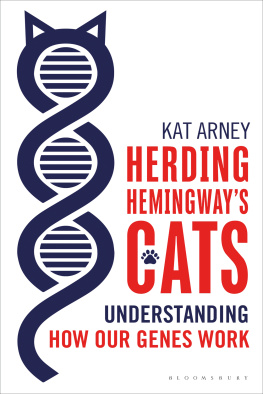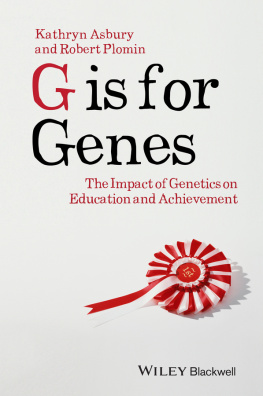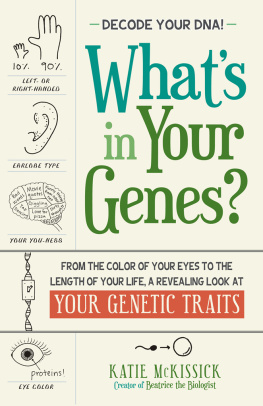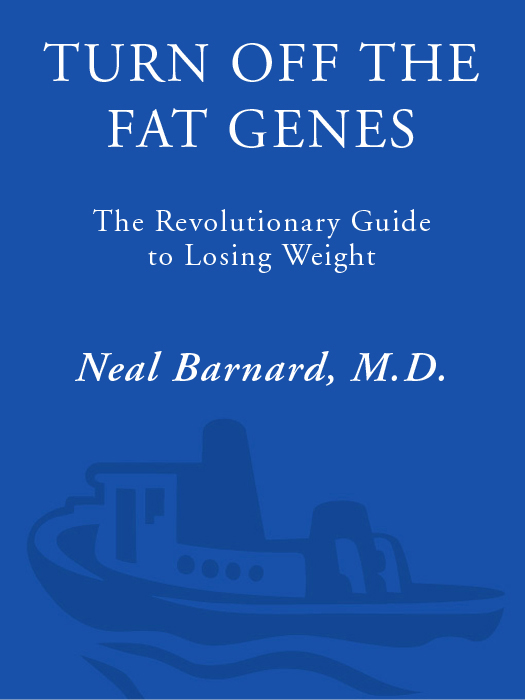M Y GOAL is to provide you with information on the power of foods for health. However, neither this book nor any other can take the place of individualized medical care or advice. If you have any medical condition, are overweight, or are on medication, please talk with your doctor about how dietary changes, exercise, and other medical treatments can affect your health.
The science of nutrition grows gradually as time goes on, so I encourage you to consult other sources of information, including the references listed in this volume.
With any dietary change, it is important to ensure complete nutrition. Be sure to include a source of vitamin B12 in your routine, which could include any common multivitamin, fortified soy milk or cereals, or a vitamin B12 supplement of five micrograms or more per day.
I wish you the very best of health.
Contents
Part One
Chapter One:
Chapter Two:
Chapter Three:
Chapter Four:
Chapter Five:
Chapter Six:
Part Two
Manipulating Gene Action
Chapter Seven:
Chapter Eight:
Chapter Nine:
Chapter Ten:
Chapter Eleven:
Chapter Twelve:
Part Three
Acknowledgments
I OWE an enormous debt of gratitude to the people who made this book possible, especially Peter Guzzardi, for his keen editorial vision and constant support; Patti Breitman, for her never-ending commitment to bringing healthful nutrition into the public eye; and Jennifer Raymond, whose menus and recipes translated nutritional theory into practice in a delightful way. Brian Belfiglio and Wendy Schuman were the essential bridges that helped the press and public understand the importance of our scientific work. Elizabeth Matthews and Kathryn Henderson kept this project on track in the many phases through which ideas turn into print. Suzy Parker provided beautiful illustrations.
Andrew Nicholson, M.D., launched our first research efforts showing the power of diet on weight control in our diabetes study conducted with Mark Sklar, M.D., of Georgetown University. Anthony Scialli, M.D., also of Georgetown, has been a source of expert objectivity and irreplaceable support as a coprincipal investigator in several of our nutrition studies. Wayne Miller, Ph.D., and Jolie Glass, M.S., of George Washington University conducted sophisticated metabolic analyses monitoring our research participants progress, and Judy Harris gave them culinary inspiration in her innovative cooking classes. Paul Poppen, Ph.D., skillfully conducted the statistical analyses that separated significant scientific findings from chance events.
Special thanks to Dean Ornish, M.D., for his research efforts that have helped conquer seemingly insurmountable health challenges, and for inspiring readers of this book with his kind foreword. Adam Drewnowski, Ph.D., an innovative researcher uncovering the links between taste and human DNA; David Bassett, Jr., Ph.D., an expert in exercise genetics; and Claude Bouchard, Ph.D., a world leader in studies of genetic effects on obesity patiently answered my many questions about hereditys role in weight control and the extent to which it can be changed.
PCRM staffers Suzanne Bobela, Andrew Breslin, Simon Chaitowitz, Jennifer Drone, Matthew Fritts, Laurice Ghougasian, A. R. Hogan, Kathryn Kuhn, Mindy Kursban, Billy Leonard, and Miyun Park greatly facilitated the conduct of our research, while Nabila Abdulwahab; Deniz Corcoran; Sossena Dagne; Claudia Delman; Godfrey Fernando; Doug Hall; Peggy Hilden; Laurel Kadish; Jennifer Keller, R.D.; Kristine Kieswer; Amy Lanou, Ph.D.; Adaora Lathan-Sanders; Lisa Lynch; Meredith Morrisette; and Brie Turner, M.S., R.D., kept our educational efforts moving forward.
Most important of all, the participants in our research studies at the Physicians Committee for Responsible Medicine gave an enormous amount of time and energy as we investigated the power of foods for health, and it is to them this book is dedicated.
Foreword
H ERES THE GOOD NEWS: The same diet that is best for losing weight is also optimal for enhancing your health and well-being.
Neal Barnard, M.D., has been a pioneer for many years in advocating the benefits of a low-fat, whole-foods, plant-based diet. In the studies that my colleagues and I at the nonprofit Preventive Medicine Research Institute have conducted over the past twenty-four years, we found that this type of diet may stop or reverse the progression of even severe coronary heart disease. Other studies have shown that eating this way may reduce the risk of a variety of other chronic diseases, including diabetes, hypertension, obesity, osteoarthritis, prostate cancer, breast cancer, colon cancer, and perhaps others.
However, most people dont really think anything bad will ever happen to them. They think prevention is borrrrr-ing: I dont care if I die sooner, I want to enjoy my life.
For many people, these are choices worth makingnot only to live longer, but also to live better. In the long run, fear of dying is not a good motivator, but joy of living is. Most people find that when they follow this type of diet, they feel better, have more energy, and experience an overall improved sense of well-being.
And they lose weight and keep it off.
You can lose weight on just about any diet. Keeping it off is a lot harder. A few years ago, the U.S. government reviewed all of the different weight-loss plans. They found that within a year, 66 percent of people gain back all the weight they lost, and 97 percent gain it all back within five years.
We found in our research, however, that the average person lost twenty four pounds in the first year and had kept off more than half that weight five years later, even though they were eating more food, more frequently, than before. Without hunger or deprivation. Simply. Safely. Easily.
They not only felt better, in most cases they were better. We also found a greater reversal of heart disease after five years than after one year, and two and a half times fewer cardiac events such as heart attack, stroke, bypass surgery, and angioplasty. The more closely people followed the program, the better they were. Clearly, if you can reverse heart disease by eating this way, then you can help prevent it.
Most weight-loss plans are based on deprivation: counting calories, restricting portion sizes, and eating less food. Sooner or later, people get tired of feeling hungry, so they go off the diet, regain the weight, and usually blame themselves for not having enough discipline, willpower, or motivation, when the real problem is that they were going about it in the wrong way.
Heres a better way: If you change the type of food, you dont have to reduce the amount of food. Fat has nine calories per gram whereas protein and carbohydrates have only four calories per gram. So if you go from a high-fat diet to a low-fat, whole-foods diet, even if you eat the same amount of food, you consume far fewer calories. You feel better and you become healthier.
When you switch from a diet based on animal protein and simple carbohydrates to a whole-foods, plant-based diet, you get a quadruple benefit:
The high fiber content of fruits, vegetables, grains, and beans reduces insulin levels, so you lose weight and lower cholesterol levels.



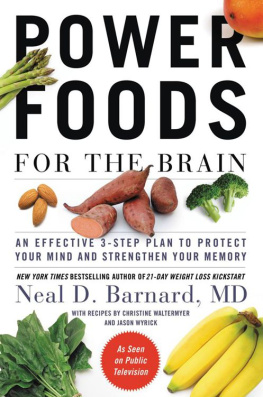

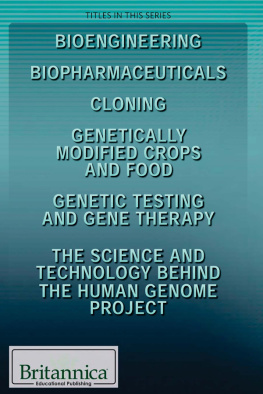

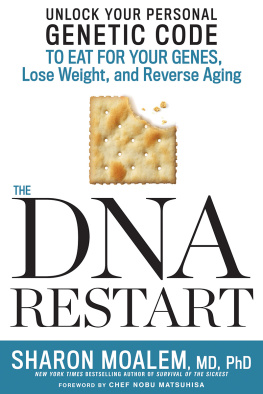
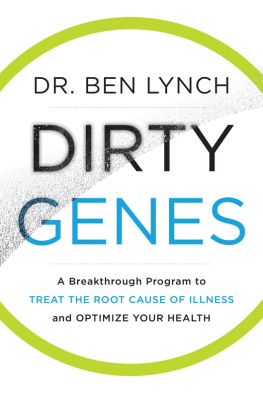
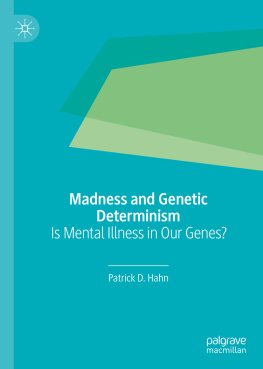

![D’Adamo - The genotype diet : [change your genetic destiny to live the longest, fullest, and healthiest life possible]](/uploads/posts/book/104355/thumbs/d-adamo-the-genotype-diet-change-your.jpg)
